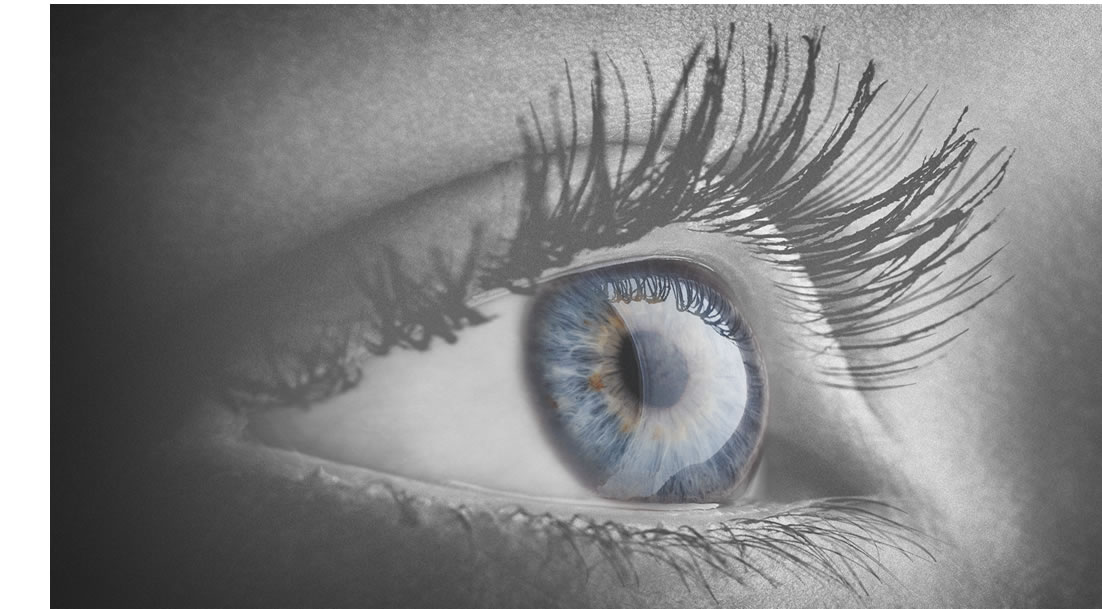Causes of Dry Eye Syndrome
Dry eyes are caused by one of two factors—either your tear system is not producing enough tears or the tears being produced are not keeping your eyes sufficiently moisturized.
The Importance of Tears
The tear system is complex: Tears carry nutrients to the cells on the surface of the cornea (the front surface of the eyeball) and remove dead or damaged corneal cells. Tears keep debris away from the cornea allowing light to enter the eye unimpeded, a necessity for clear vision. To function normally, the cornea must be covered at all times by a coating of tears called the tear film. Tears are made up of oil, water, and mucous.
The oily layer is the outermost layer. It is produced by the meibomian glands, which are found in the eyelids. The oily layer slows the evaporation of basal or watery tears from the surface of the eye. If there is a problem in the oil glands of the eyelid, we call this Meibomian Gland Dysfunction (MGD). Inadequate or poor quality oil will allow the liquid tears to evaporate or run off of the corneal surface of the eye.
The watery layer, or the middle layer, is a major part of the tear film. It is produced by the lacrimal glands which are located in the upper outside portion of each eyeball socket. Tears originate from the outer part of the eye (toward the ear) and drain towards the nose side of the eye.
The mucous layer, also known as the mucin, is the innermost layer that touches the eye that allows the tears to spread smoothly and evenly over the cornea. Mucous cells on the surface of the eye make up the inner layer of the tear component.
Types of Tears
Tears are a complex solution comprised of a liquid, oily and mucous layers. Each layer is vital to keeping the eye properly moisturized. Inadequate lubrication leads to symptoms of discomfort and can possibly interfere with vision.
Tears provide lubrication between the cornea and eyelid. They protect the eyes from dust, bacteria, viruses, fumes, and other foreign particles. The trickle of tears that are constantly being produced from moment to moment is called the Basal Tear Secretion. Reflex tears are the eyes’ response to strong emotions, fragrances, wind, or any ocular irritant. Reflex tearing is essentially crying. Reflex tears are sent out like an army of troops, with the goal of washing or flushing away foreign substances. If the eye is not making enough tears from moment to moment (Basal Tear Secretion), then the eyes will get irritated and reflexively cry.
|
How Do Tears Prevent Dry Eyes?
Tears are a major protective agent for the eyes. Tears not only wash dust away from the eyes, but also soothe the eyes, provide oxygen and nutrients to the cornea, and help defend against eye infections by removing microorganisms that can colonize the eyes. Not only are tears extremely important to ocular health, but tears play a huge role in good vision; since the air-tear interface is the strongest focusing (refractive) part of the eyeball.
So how do we prevent dry eyes?
In some cases it may not be that simple. As we age, our tear system, like the rest of our body, begins to shut down. We simply do not produce as many tears as we once did, and the tears we do produce are not of high quality. It is possible, however, for younger people to mitigate this condition by taking preventive steps now, before the tear system begins to shut down.
General Tips to Prevent Dry Eyes
-
Blink more often.
-
Increase your intake of vitamins A and C by making sure your diet consists of many green, leafy vegetables, fish, nuts, citrus fruits, and vegetables, and taking Omega 3 Fatty Acids. Flaxseed oil supplements may also be helpful.
-
Do not ignore symptoms of dry eye syndrome.
-
Avoid windy and dusty environments; do not allow air to blow directly into your eyes.
-
Use a humidifier during winter months, or whenever you are in a dry indoor environment.
-
Take eye breaks if you are going to be reading or staring at a computer for a long time. A handy rule to remember is to gently close your eyes for twenty seconds every twenty minutes that are spent looking at a video display or reading material.
-
Using warm, moist compress therapy on your eyes daily will help to keep the oily meibomian glands from becoming clogged.
-
Practice good eyelid and eyelash hygiene. You may use wet cotton swabs (Q-tips) or commercially available pre-moistened eyelid cleansers or a mild baby shampoo to keep your eyelashes and the openings to the meibomian glands clean.
-
Protect your eyes from UV rays, chemicals, radiation, and wind by wearing sunglasses, goggles, or a face mask.
-
Position computer screens below eye level to allow your eyelids to cover more of your eyes instead of keeping them wide open as they are when you are looking up.
-
Drink plenty of water each day to avoid dehydration.
|





